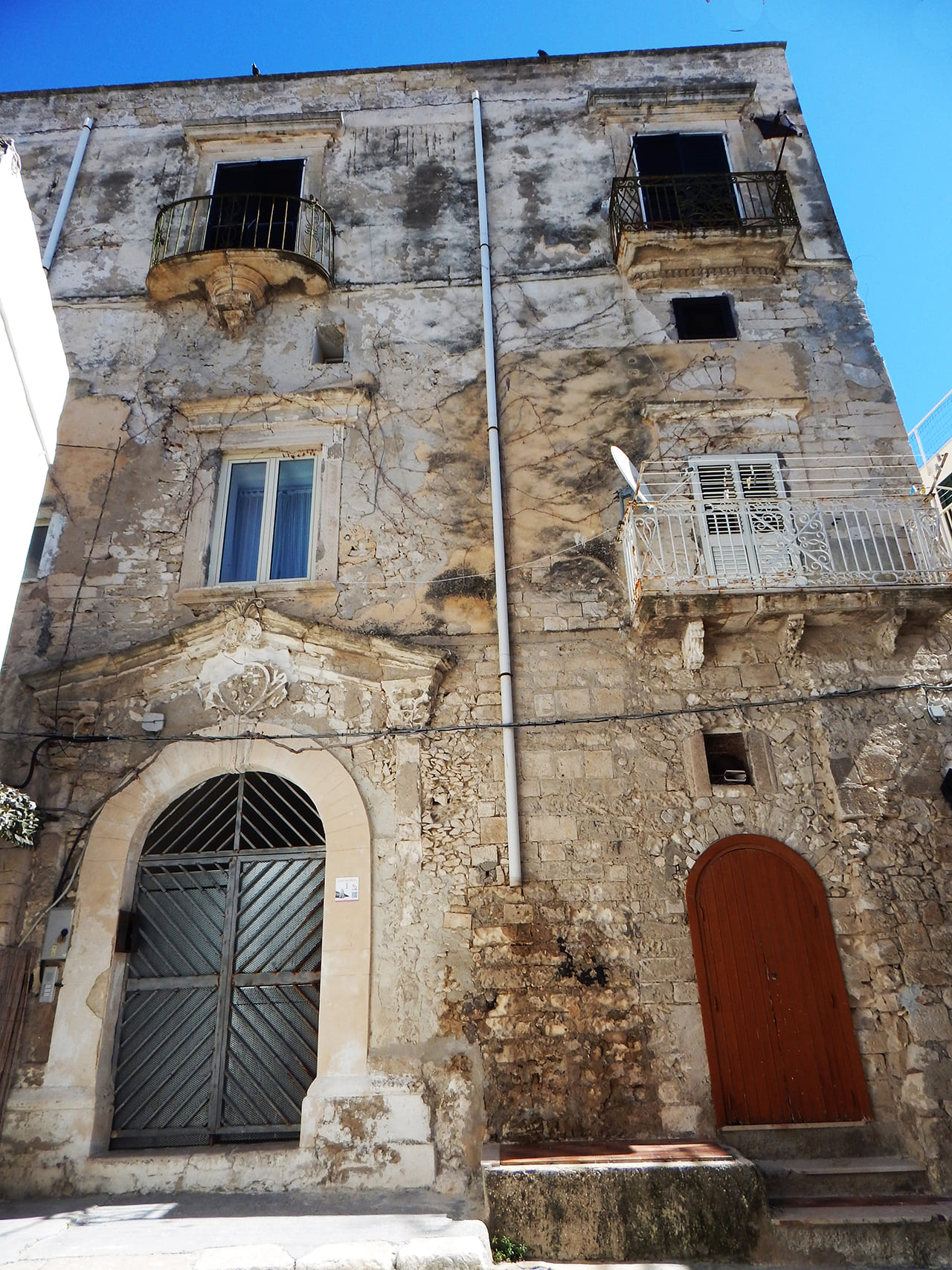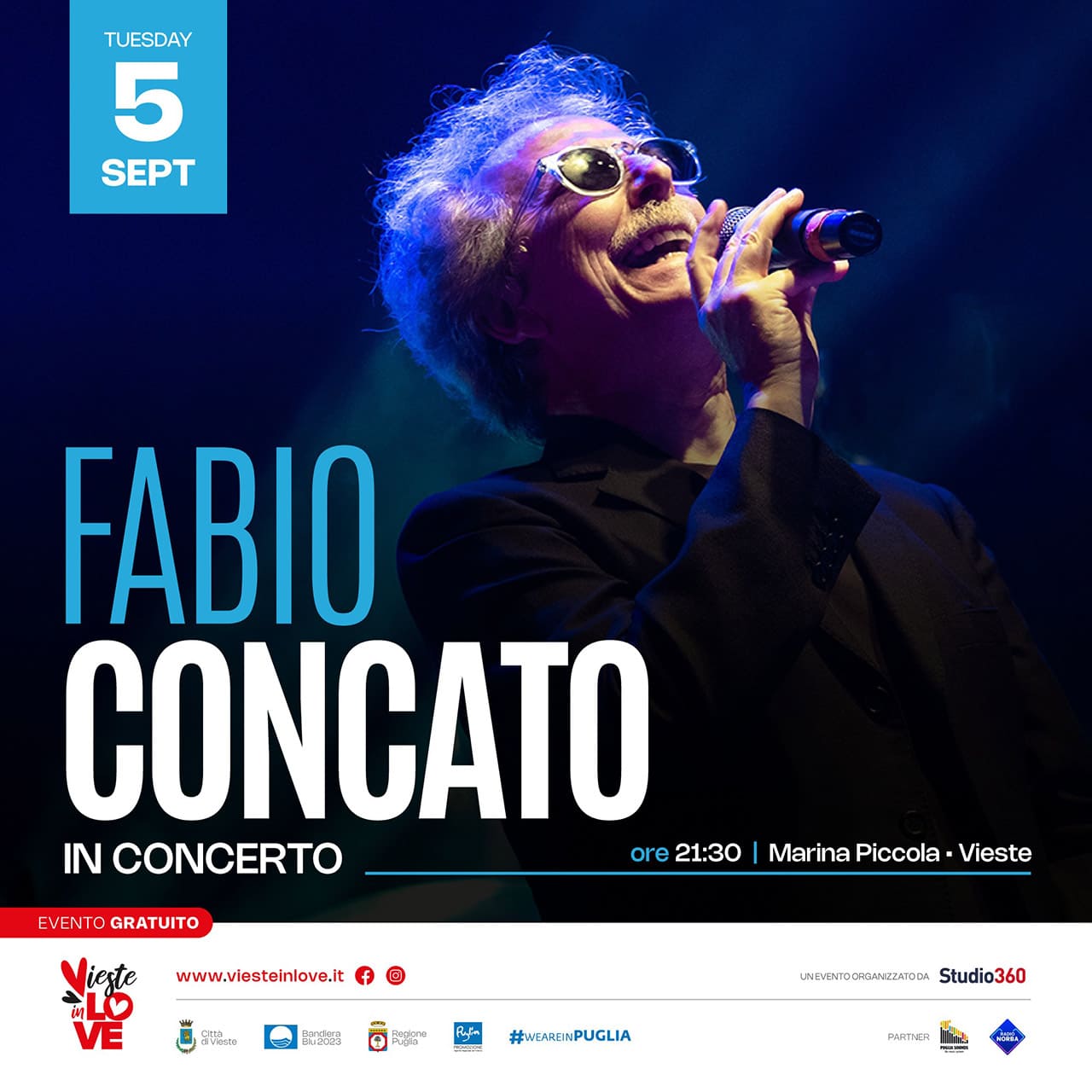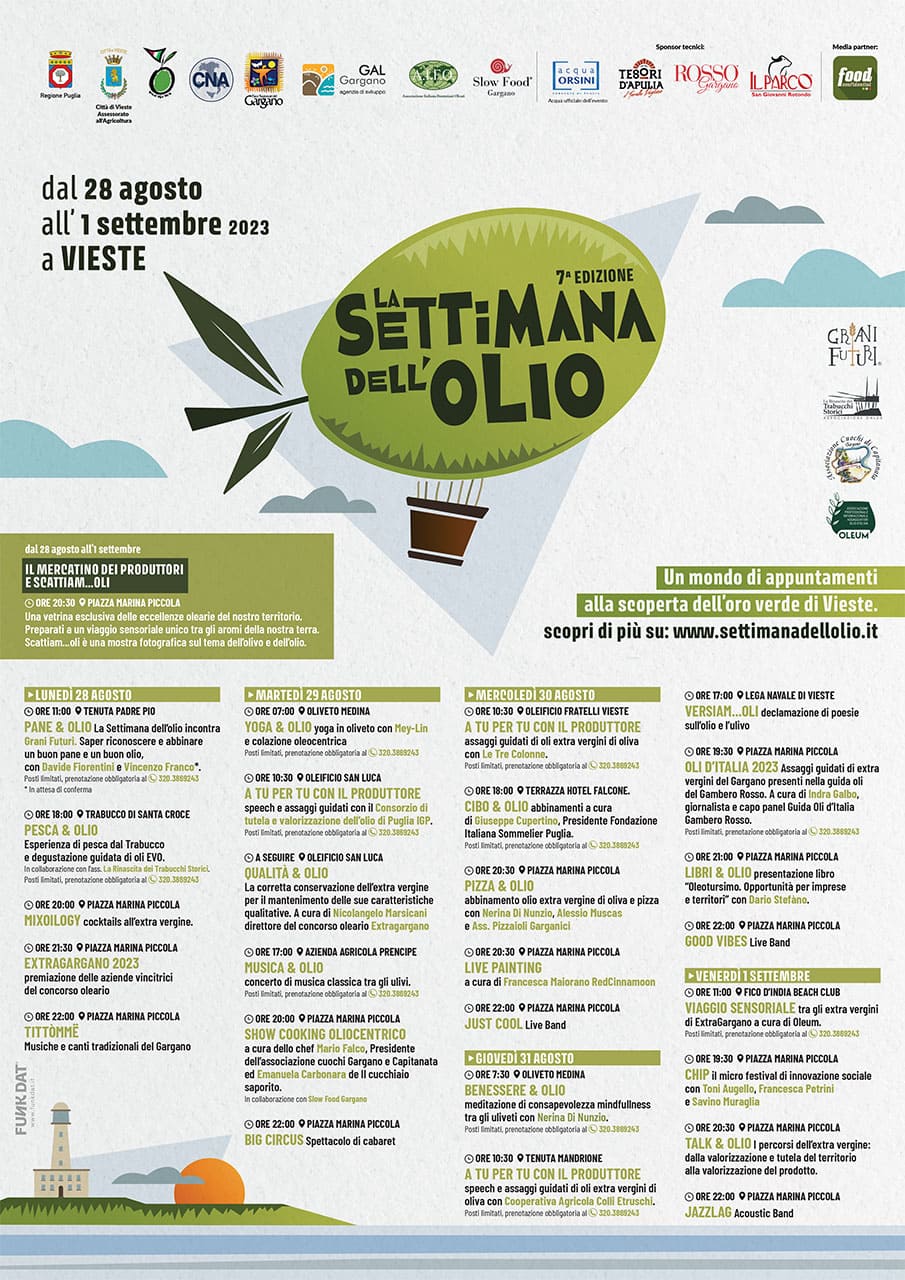Dell’ex monastero che si erge in questo slargo non abbiamo documenti che ci attestano la sua costruzione, la fonte più antica è la Relazione ad Limina redatta dal vescovo Conte Mascio Ferracuti, in data 25 settembre 1597, e che il monastero di Vieste possedeva diversi oliveti. Si ha per tradizione che Celestino V, una volta trasferito come prigioniero da Vieste al castello di Fumone, i due confratelli che l’accompagnarono restarono a Vieste e, successivamente, fondarono un monastero fuori le mura della città, nei pressi degli attuali giardini pubblici, ove è il pozzo detto di S. Pietro Celestino. Ritenuto un luogo poco sicuro e distrutto forse dal terremoto del 1414 o dal saccheggio turco del 1480 guidato da Alì Acmet Pascià, il monastero fu poi ricostruito con la partecipazione degli abitanti all’interno della città. Durante il terribile terremoto del 31 maggio 1646 subi gravi danni e l’unico monaco morì sotto le macerie. Il monastero di San Marco fu soppresso nel 1652 mentre la chiesa annessa, dedicata a S. Marco e a S. Pietro Celestino, restò attiva fino ai primi anni dell’Ottocento, successivamente divennero di proprietà privata. Il 27 luglio 1861 la piccola piazza antistante l’ex monastero fu teatro di crimini quando i briganti misero a soqquadro il paese. Questi vi appiccarono un falò e, fra strazi inauditi, torturarono e uccisero Giovannicola Spina, gettandolo su una catasta di legna accesa.
There are no documents attesting the construction of the monastery, the oldest source is the report drawn up by Bishop Conte Mascio Ferracuti, on September 25, 1597, and that the monastery of Vieste owned several olive groves. It is a tradition that Celestine V, once transferred as a prisoner from Vieste to the castle of Fumone, the two confreres who accompanied him remained in Vieste and founded a monastery outside the city walls, near the current public gardens, where it is the socalled well of St. Peter Celestine. Considered an unsafe place and destroyed perhaps by the earthquake of 1414 or the Turkish led by Ali Acmet Pasha in the 1480, the monastery was then rebuilt with the participation of the inhabitants within the city. During the terrible earthquake of 31 May 1646 he suffered serious damages and the only monk present died under the rubble. The monastery of Saint Mark was suppressed in 1652, while the adjoining church, dedicated to S. Mark and S. Pietro Celestino, remained active until the early 19th century, after which they became private property. On 27 July 1861, the small square in front of the former monastery was the scene of crimes when the bandits sacked the village. They set a bonfire there and, amidst unheard of torments, tortured and killed Giovannicola Spina, throwing him on a pile of burning wood.
MULTIMEDIALE
Poco distante da Largo San Marco in prossimità dell’incrocio tra via Diaz, via dei Mille e via Arco Cirillo sullo spigolo alto di un palazzo vi sono, in posizione alternata, incisi dei simboli in bassorilievo, appartenenti ai Templari. Sulla prima è riprodotta la croce a otto punte mentre sulle altre si notano una freccia, una ruota, una sagoma che richiama la facciata di una chiesa ed altre immagini. Molto probabilmente vi era una loro comunità, con una Domus, e che forse possedeva delle proprietà. Purtroppo non ci sono documenti che attestano la loro presenza a Vieste. Queste lastre sicuramente non sono nel luogo originario ma vennero recuperate, forse dopo il terremoto del 1646, e riusate per la sopraelevazione dell’edificio nel Settecento. A sinistra di via Arco Cirillo invece è presente un interessante portone di legno. La chiave di volta decorata con una conchiglia ci ricorda l’antica simbologia in uso per riconoscere luoghi dove si ospitavano i pellegrini provenienti dall’Oriente e diretti al Santuario di San Michele a Monte Sant’Angelo. Nella parte superiore di questo portone sono anche presenti due decorazioni che ricordano gli ophthalmoi, gli occhi delle navi. L’uso di questa particolare “decorazione” si perde nella notte dei tempi è ben noto, infatti, che sia Fenici che Greci non mancavano mai di fregiare le loro prore con tali occhi. A quei tempi essi servivano a tener lontani gli spiriti maligni e con il passare dei secoli subirono un’evoluzione impiegandoli contro il malocchio.
Not far from Saint Mark square, near the intersection of Via Diaz, Via dei Mille and Via Arco Cirillo, on the upper edge of a building there are, in alternating position, engraved symbols, belonging to the Templars. On the first one there is an eight-pointed cross, while on the others there is an arrow, a wheel, a silhouette recalling the facade of a church and other images. Most likely there was a community of theirs, with a Domus, and they probably owned property. Unfortunately there are no documents attesting to their presence in Vieste. These slabs are certainly not the original site but were recovered, perhaps after the earthquake of 1646, and reused for the elevation of the building in the eighteenth century. To the left of via Arco Cirillo there is an interesting wooden door. The keystone decorated with a shell reminds us of the ancient symbolism used to recognize places where pilgrims can be hosted. At the top of this door there are also two decorations reminiscent of the ophthalmoi, the eyes of the ships. The use of this particular “decoration” lost in the mists of time is well known, in fact, that both Phoenicians and Greeks never failed to scrub their progeny with such eyes. At that time they were used to keep evil spirits away. And over the centuries they evolved against the evil eye.
In der Nähe des Largo San Marco an der Kreuzung zwischen der Via Diaz, der Via dei Mille und der Via Arco Cirillo befinden sich in der oberen Ecke eines Gebäudes eingravierte Symbole im Flachrelief, die zu den Templern gehören. Es gibt diese Symbole: ein achtzackiges Kreuz, einen Pfeil, ein Rad, die Form einer Kirche. Wahrscheinlich gab es eine Gemeinde mit einem Domus und Grundstücken. Leider gibt es keine Dokumente, die ihre Anwesenheit in Vieste belegen, und vielleicht diese Platten wurden erst nach dem Erdbeben von 1646 geborgen und für ein neues Gebäude wiederverwendet. Links von der Via Arco Cirillo befindet sich eine interessante Holztür. Der Schlussstein ist mit einer Muschel verziert. Er wurde in der Vergangenheit verwendet, um zu erkennen, wer die Pilger beherbergte, die zum Heiligtum von San Michele auf dem Monte Sant’Angelo gingen. An dieser Tür befinden sich auch zwei Verzierungen, die an die “ophtalmoi” erinnern, die Augen der Schiffe, die von Griechenland und den Phöniziern auf dem Bug für die bösen Geister verwendet und dann gegen den bösen Blick verwendet wurden.















